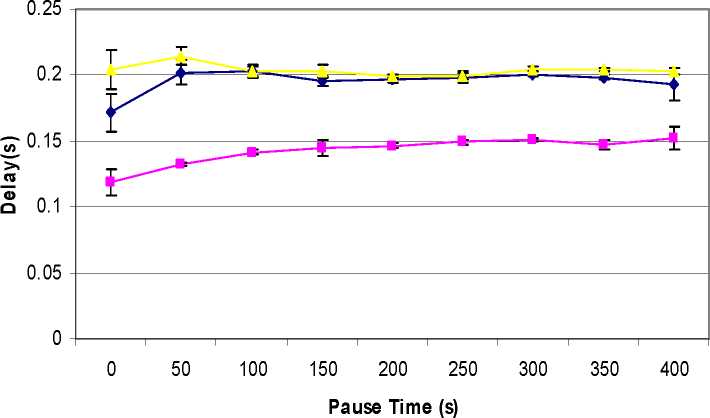5.7.2.3 End to End Delay
Figure 5.10 shows the end to end delay evaluation as a function of pause time; the figure
displays the values for SARM, E2M and DDM. The evaluation result shows that the
proposed protocol has less end to end delay values in comparison with the other two
protocols. These results because at SARM there is a load distribution of receivers in
BNRs for forwarding the traffic to the receivers. Because of the use of XFs in E2M, the
traffic will wait in these nodes until it can be delivered, which will cause delay. In DDM
the delay comes from the processing time that required by the intermediate nodes on the
data packets.
End to End Delay

—SARM
-Dd DDM
-⅛-E2M
Figure 5.10 End to end delay as a function of pause time
119
More intriguing information
1. The Making of Cultural Policy: A European Perspective2. THE UNCERTAIN FUTURE OF THE MEXICAN MARKET FOR U.S. COTTON: IMPACT OF THE ELIMINATION OF TEXTILE AND CLOTHING QUOTAS
3. The name is absent
4. A Review of Kuhnian and Lakatosian “Explanations” in Economics
5. The Distribution of Income of Self-employed, Entrepreneurs and Professions as Revealed from Micro Income Tax Statistics in Germany
6. Visual Perception of Humanoid Movement
7. The effect of classroom diversity on tolerance and participation in England, Sweden and Germany
8. Testing the Information Matrix Equality with Robust Estimators
9. The name is absent
10. Three Policies to Improve Productivity Growth in Canada